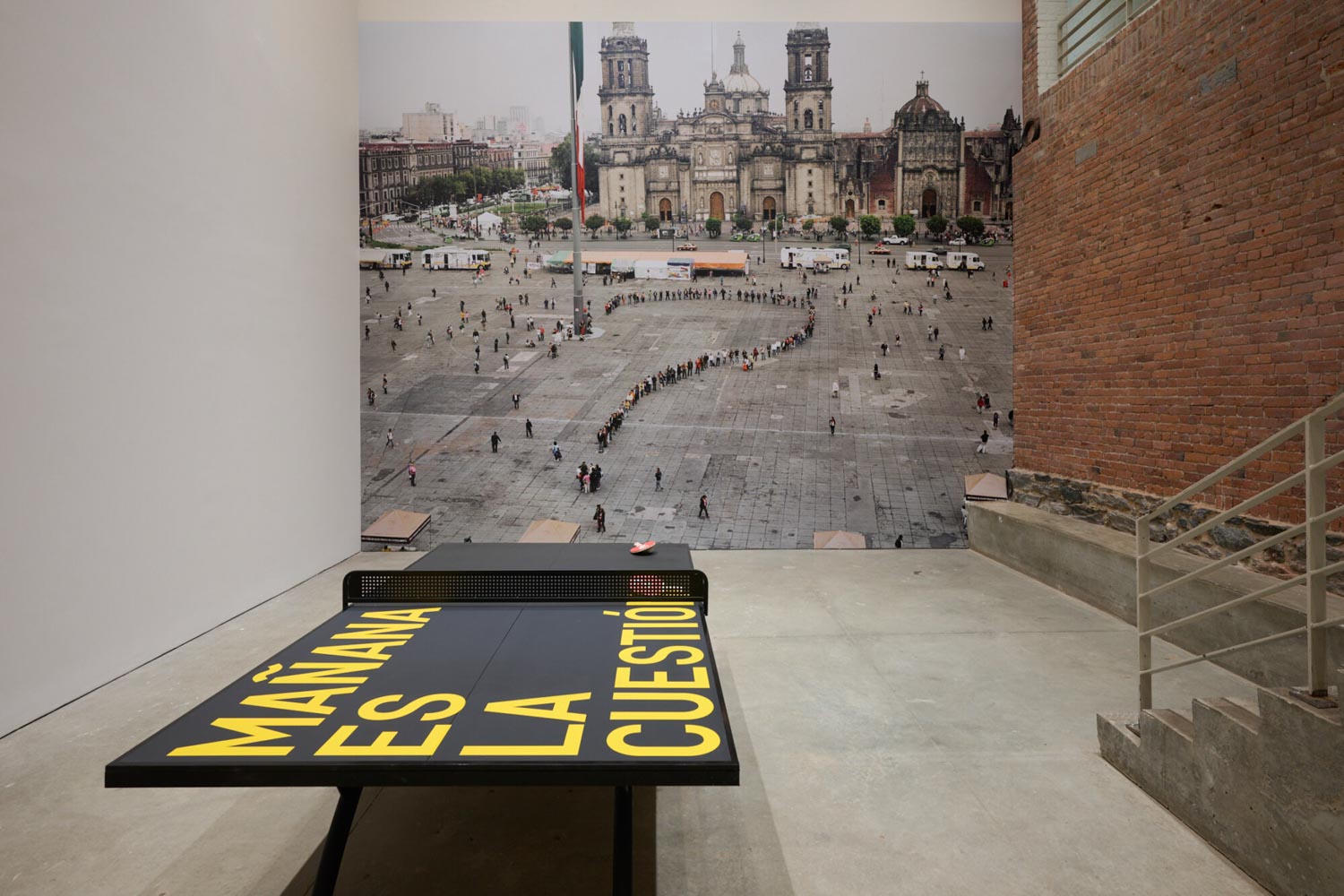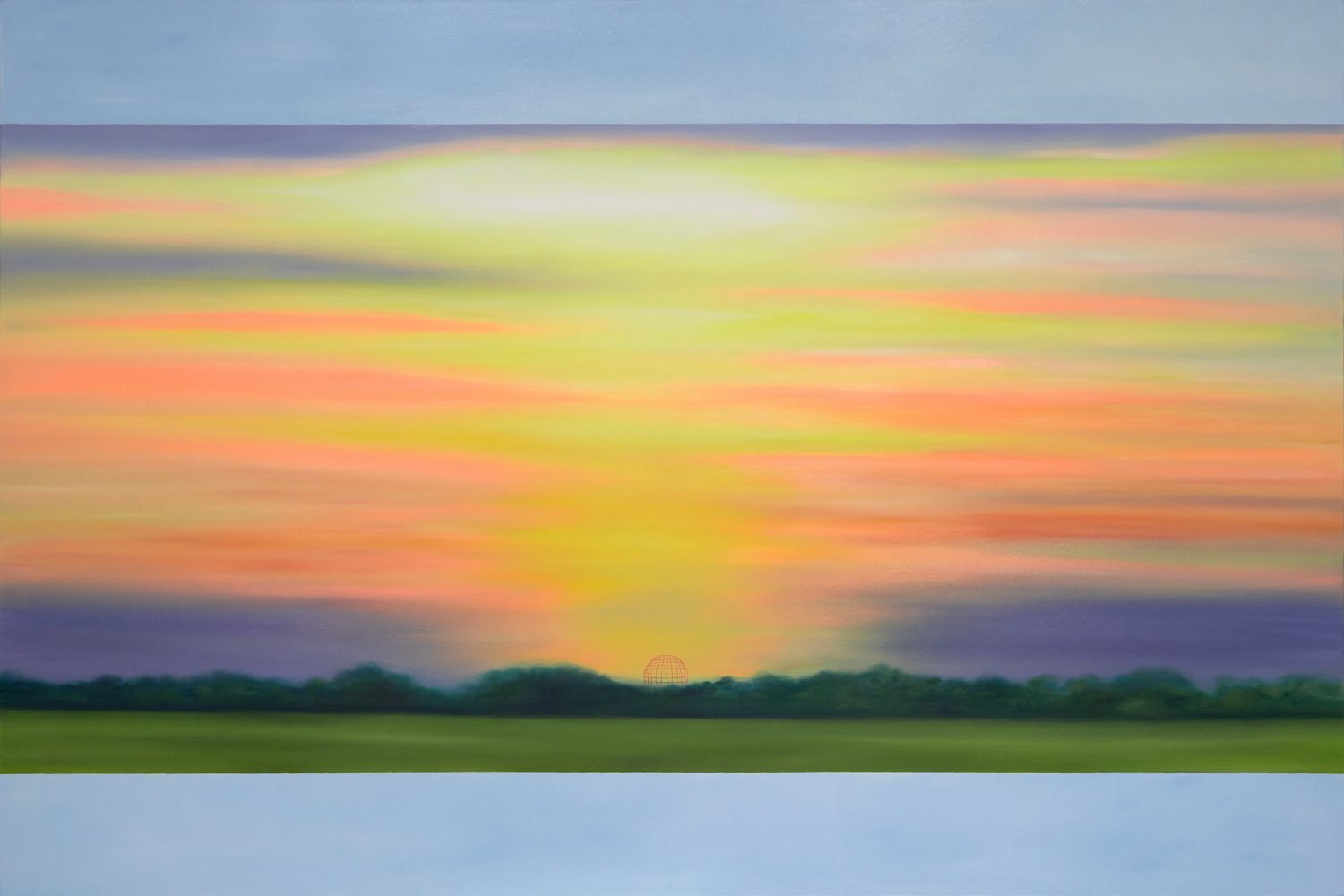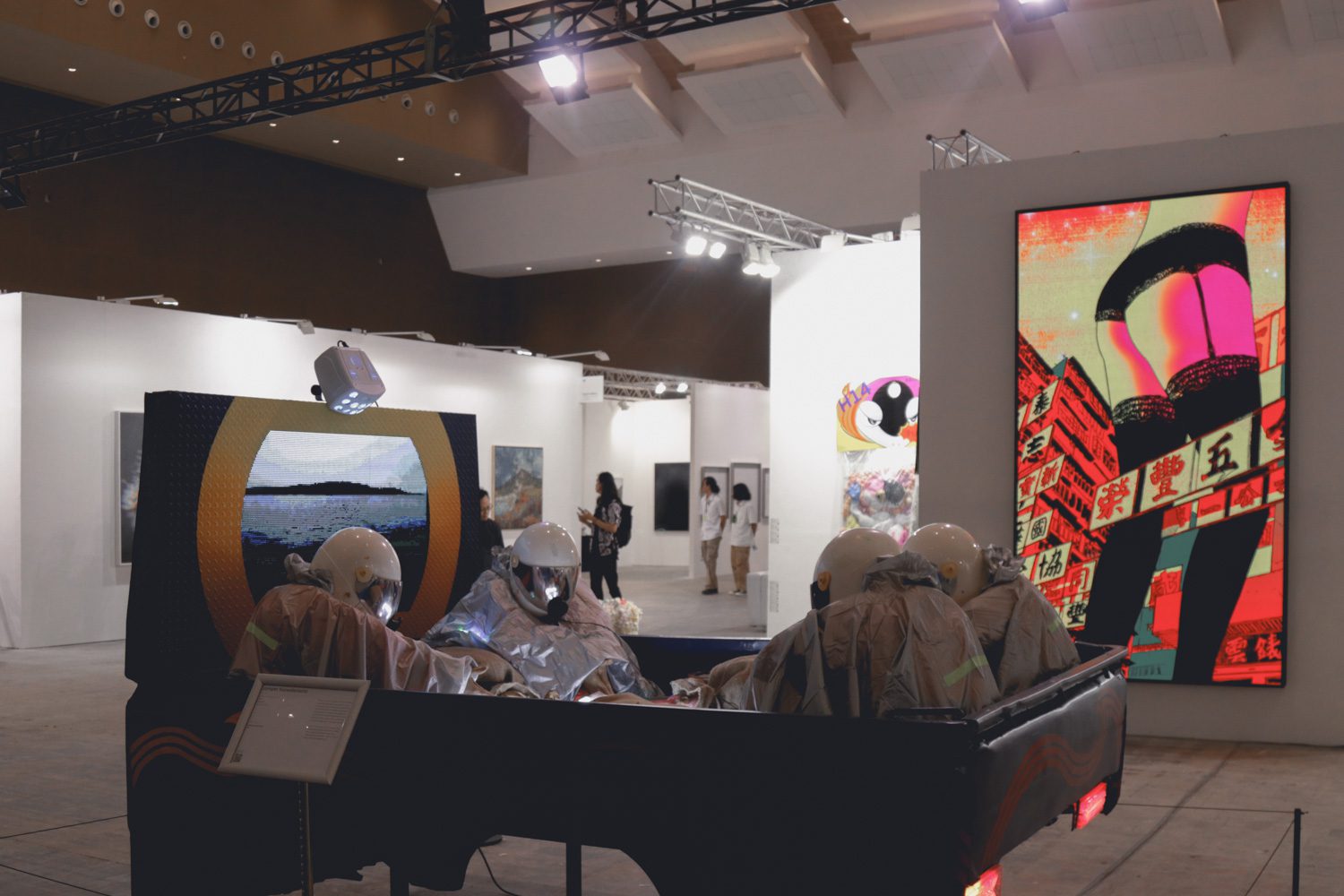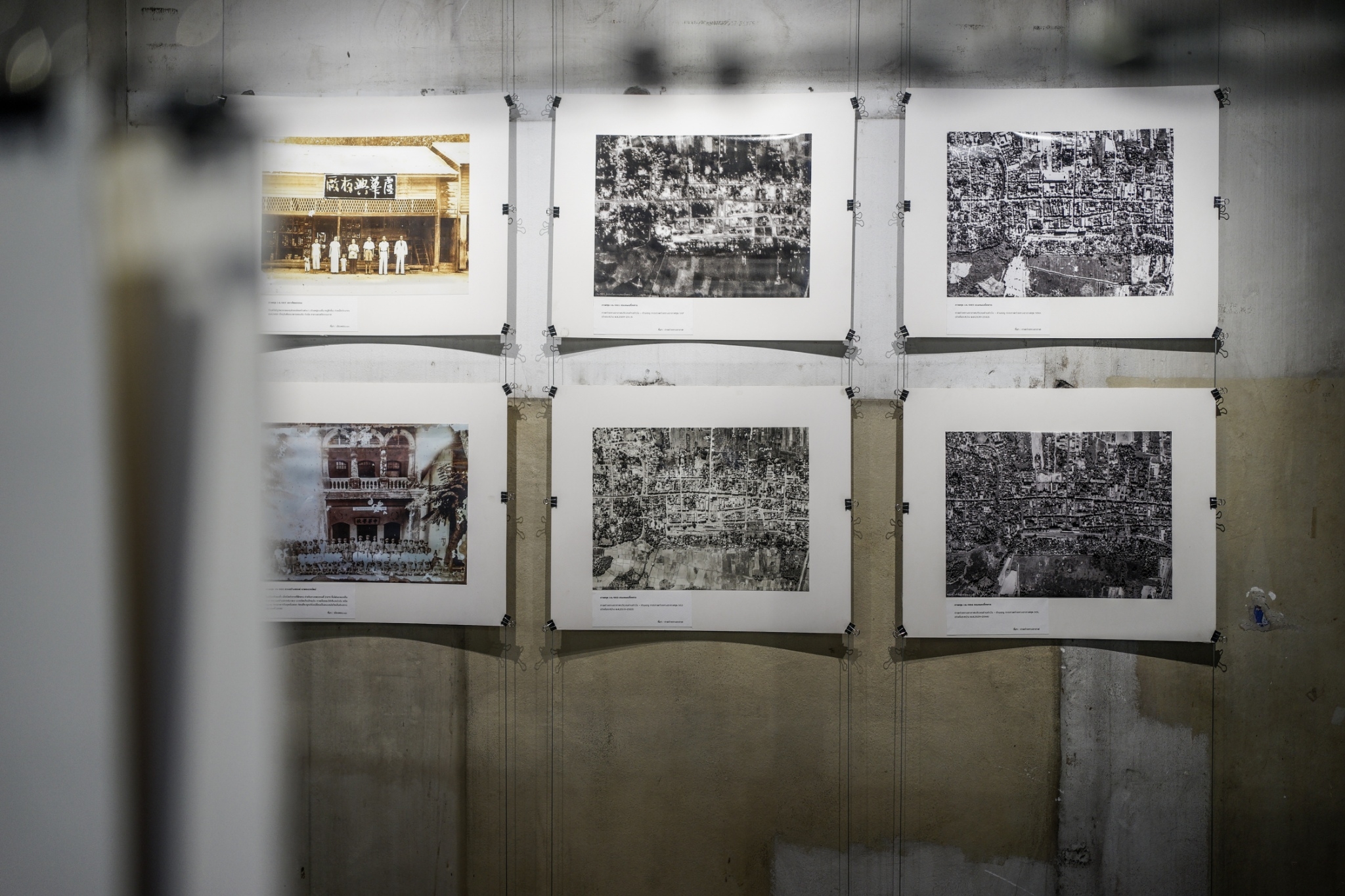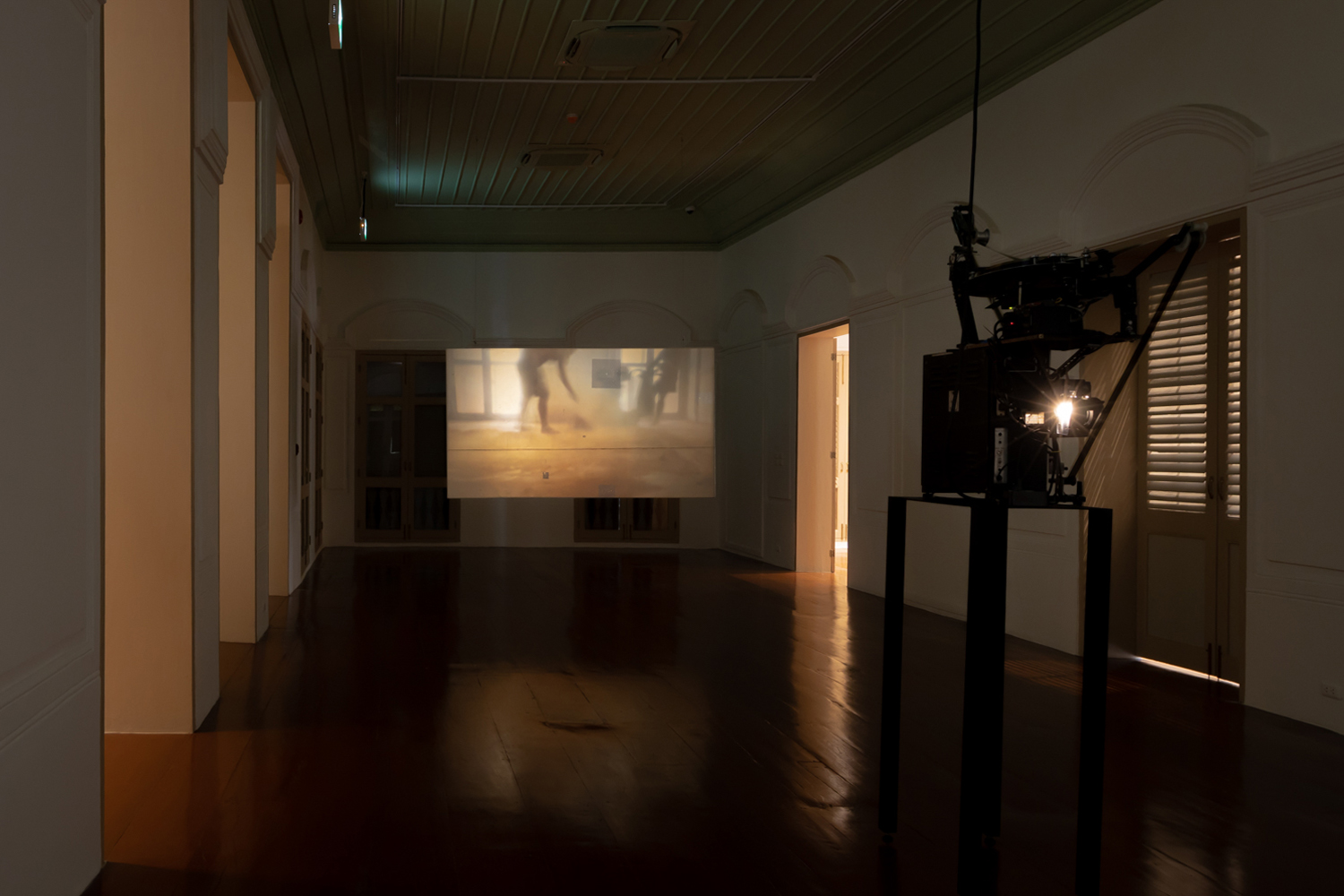Tag: art exhibition
RIRKRIT TIRAVANIJA: A LOT OF PEOPLE
EXPLORE THE RETROSPECTIVE EXHIBITION ‘RIRKRIT TIRAVANIJA: A LOT OF PEOPLE’ BY THE ARTIST WHO HAS A TRADEMARK AS ‘THE ARTIST WHO COOKS PAD THAI.’ THIS EXHIBITION IS HELD UNTIL MARCH 4, 2024, AT MOMA PS1 IN NEW YORK
PAKA
PAKA IS AN OIL PAINTER WHO CREATES ART FREELY WITHOUT CONFINING THEMSELVES TO ANY GENRE AND PROUDLY PRESENTS HER IDENTITY THROUGH HER WORKS, FORMING THE UNIQUE STORY IN EACH CREATION
ART JAKARTA 2023
REVISIT THE CONTEMPORARY ART FAIR IN INDONESIA, ART JAKARTA 2023, WITH ART4D. THIS TIME WE WILL WALK THROUGH THE ART FAIR LOADED WITH ARTWORKS FROM 68 GALLERIES FROM 11 COUNTRIES
ART-THAI-TIME
‘ART-THAI-TIME’ IS AN EXHIBITION THAT BRINGS TOGETHER ARTWORKS FROM THE BHIRASRI INSTITUTE OF MODERN ART SINCE IT WAS FOUNDED AND RECOUNTS THE DEVELOPMENT IN CONTEMPORARY ART WHEN CONCEPTS OF ‘THAI-NESS’ WERE EMPLOYED AS A MEANS TO BOLSTER POLITICAL IDEOLOGIES
TRADITIONS TRANSFORMED

THE ART EXHIBITION FEATURING ARTWORKS FROM SEVEN ARTISTS MADE WITH DEDICATION, HARD WORK, AND PERSEVERANCE, REVEALING THE PLEASURE OF CREATING SOMETHING TANGIBLE
FIELD COLLAPSE
AFTER BECOMING FAMILIAR WITH WORKING IN ARCHITECTURE WELL, THE STUDIO ‘thingsmatter’ TAKES ON THE ROLE OF AN ARTIST, AND UTILIZES REBAR IN THEIR EXHIBITION TO COMMUNICATE ISSUES IN THE ARCHITECTURE AND CONSTRUCTION INDUSTRY
TEXT: NAPAT CHARITBUTRA
PHOTO: KETSIREE WONGWAN EXCEPT AS NOTED
(For Thai, press here)
Rebar, plywood, rubber, fasteners, and light are the elements which form a large installation currently occupying almost the entirety of 100 Tonson Foundation’s gallery. The piece exudes a different affect from what one might expect from a typical art exhibition. Savinee Buranasilapin and Tom Dannecker of thingsmatter spoke with art4d about their approach to materiality, and some of the other topics and ideas behind their work, Field Collapse.
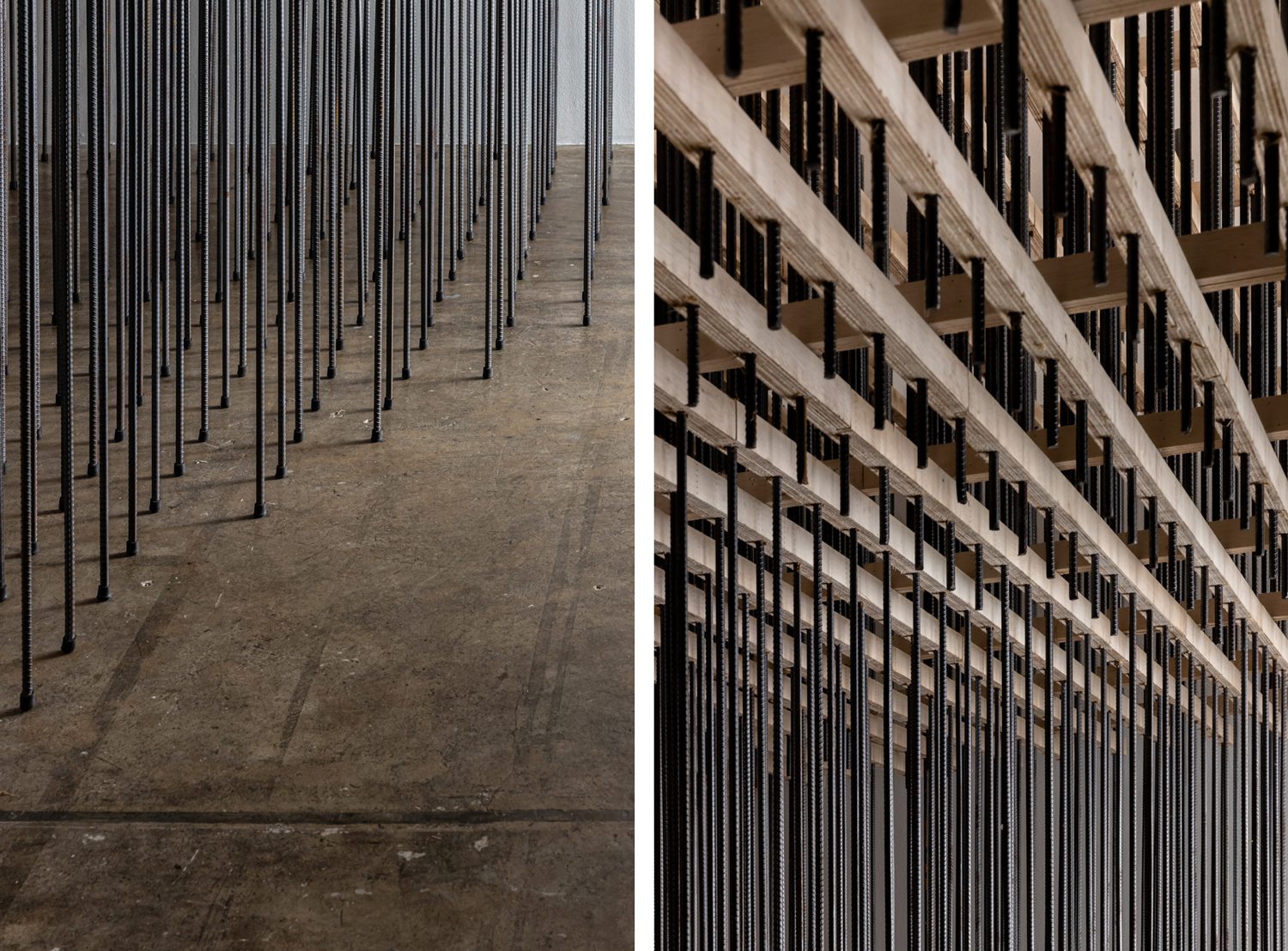
“I’ve always felt that these fragments found on construction sites, like formwork, scaffolding, raw materials, and even the way that workers move through the project are incredibly beautiful and conceptual, in the sense that they can be considered both artifacts and happenings,” Savinee said about her view of the process of creating a work of architecture as a form of performance that occurs only temporarily before disappearing.
Tom responded, “In college, I was self-conscious that our design exercises weren’t going to be built. It felt like I was playing with dollhouses, compared to what my friends in other departments did. So I started putting most of my energy into the aesthetics of the process, rather than a make-believe finished product.”


The two biographical narratives share a common theme: a focus on the work-in-progress, the period when the designer’s engagement is at its highest intensity, compared to the completed work. This interest has evolved over time, culminating in the work at 100 Tonson Foundation.
thingsmatter’s commitment to process-as-product results in the improbable use of five tons of rebar to support only itself. “In conventional construction, materials like this would need to be economically optimized. Here, we have the luxury of using them in a very inefficient way, to evoke a feeling. We want visitors to slow down, and move mindfully through the slightly disorienting spaces we’ve created.”
The structure begins immediately at the gallery’s entrance. Narrow passages through the rebar give the feeling of walking through a forest. Visitors are led up into a skylight—the exhibition’s only light source—before descending toward the empty space at the back of the gallery. This space hosts a series of workshops and talks over the show’s six-month duration, but most of the time, it simply allows enough viewing distance to read the installation as an object, rather than an interior. From this vantage point, visitors can watch others moving through the forest of rebar. “We want to engage the movements of people moving through the structure as an element of the installation,” thingsmatter explained.

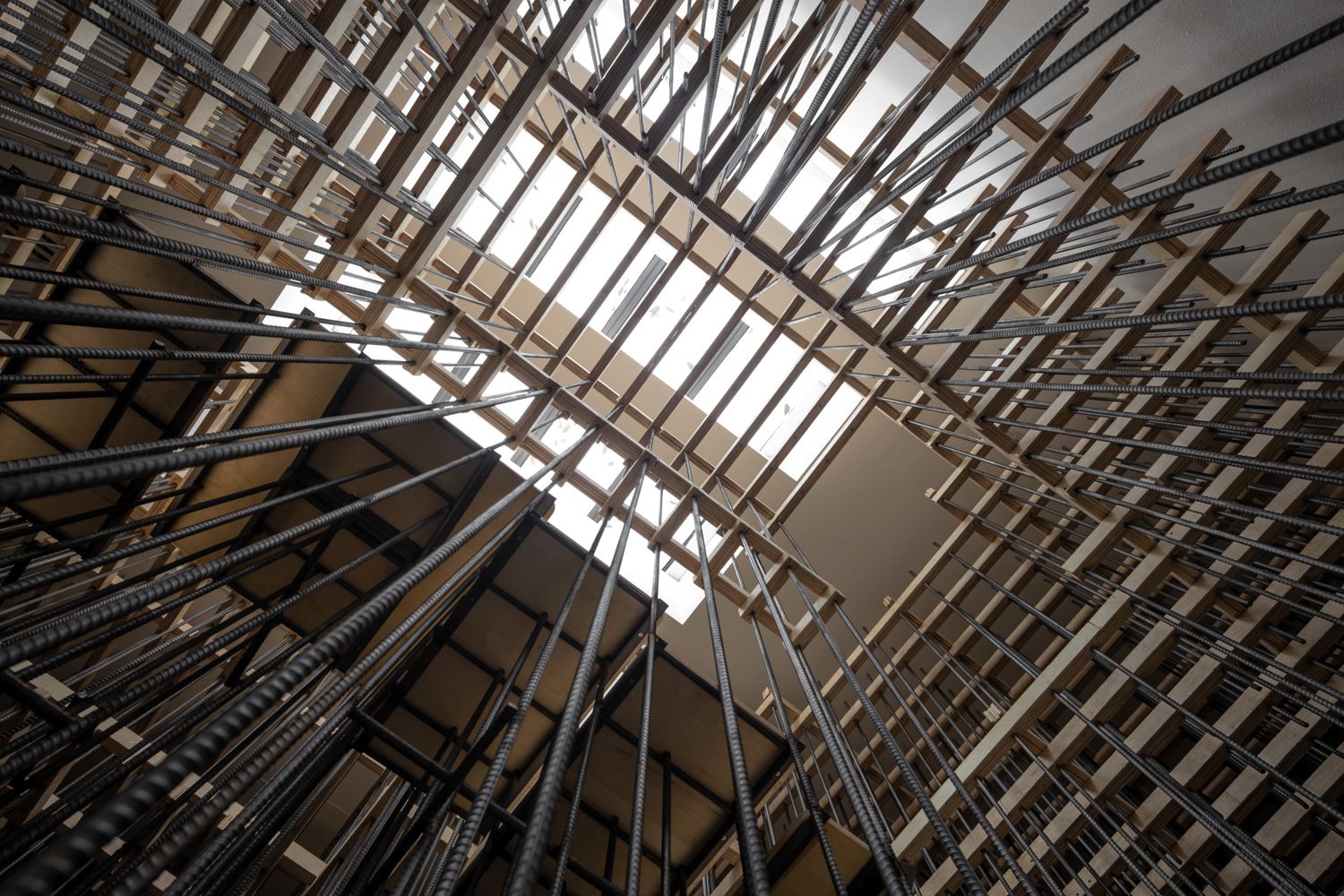
Why rebar? It’s a material that typically does its work from behind the curtain (because it’s meant to be covered by concrete). This time around, the rebar takes the lead in communicating about issues in the architecture and construction industry, including issues of economic and cultural hierarchy, both real and perceived.
“Within a design collaborative, who has the more important job, the one who chooses shapes, or the one who draws construction details? The one who calculates costs, or the one who talks to clients? Then there’s a big group of people doing different aspects of the actual building work. In order to happen, any project needs all of these roles”, Tom explained.
The stakeholders all rely on one another, and each component has its own set of roles and responsibilities that are critical to the conception, existence, and overall operation of architecture. thingsmatter hopes that by displaying the work in progress as a finished installation, viewers will contemplate issues of authorship.


art4d and thingsmatter also discussed the issue of creating a work in a new context.
Field Collapse is not thingsmatter’s first installation. The duo has consistently created ambiguous works that can be interpreted as a wide range of things (sculpture, for example) other than architecture. Ligature, a bamboo and steel construction from 2018, is one such project. Currently located at Jim Thompson Farm in Nakhon Ratchasima province, it was previously displayed in front of the Bangkok Art Culture Center, and initially built as a stage pavilion for ASA Expo 2018. One can see the skeleton of Field Collapse in Caged Flower, another work exhibited for ASA Expo, which experimented with the unusual structural and atmospheric qualities of rebar. But Field Collapse stands out among thingsmatter’s works, in that it was created for a bona fide art institution: 100 Tonson Foundation.

Caged Flower, 2017 | Photo courtesy of thingsmatter
“We’ve always created works with elements of ambiguity. Our image in the architectural community is quite artsy, but once we set foot inside the gallery space, we’re considered outsiders,” Savinee explains. thingsmatter developed the project for 100 Tonson Foundation in response to an open call for art projects last year.
“As much as we’ve enjoyed the ambiguity of our position, we’re happy to have our work validated as art,” Savinee said, referring to the authority that art institutions have in establishing cultural value. The installation is partly a response to the connotations of the art gallery context. The challenges of executing the project weren’t just the typical architectural and logistical issues of dealing with the space, but finding a way to address the cultural connotations of the “white cube.”
Another aspect of the exhibition that distinguishes it from previous works by thingsmatter is the way it directs viewers’ interactions with the working drawings.
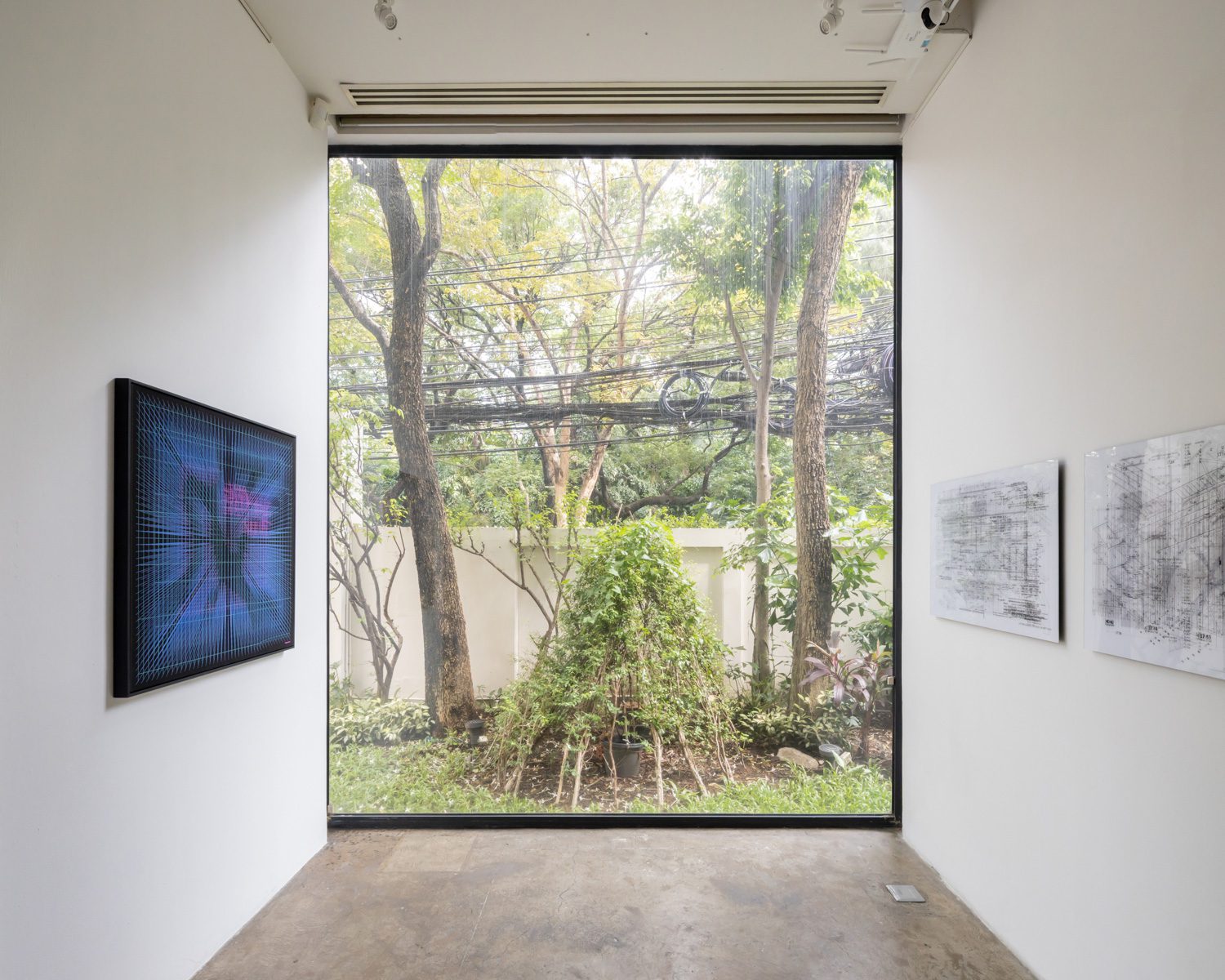

“We were thinking about how to use the small room next to the main gallery, to display secondary artifacts related to the main work,” Savinee recalled. “If we spread 100 pages of construction drawings on the table, viewers would read them as banal instructions” Tom added. “We wanted to transform them into something that captures the feeling of the design and construction process, rather than details” Layering many pages of working drawings into palimpsests, enlarged and mounted on the wall, is a method of capturing architectural process as art. A structural analysis diagram is likewise elevated by being printed and framed as fine art, with other versions printed onto scarfs, sold as gift-shop merchandise.
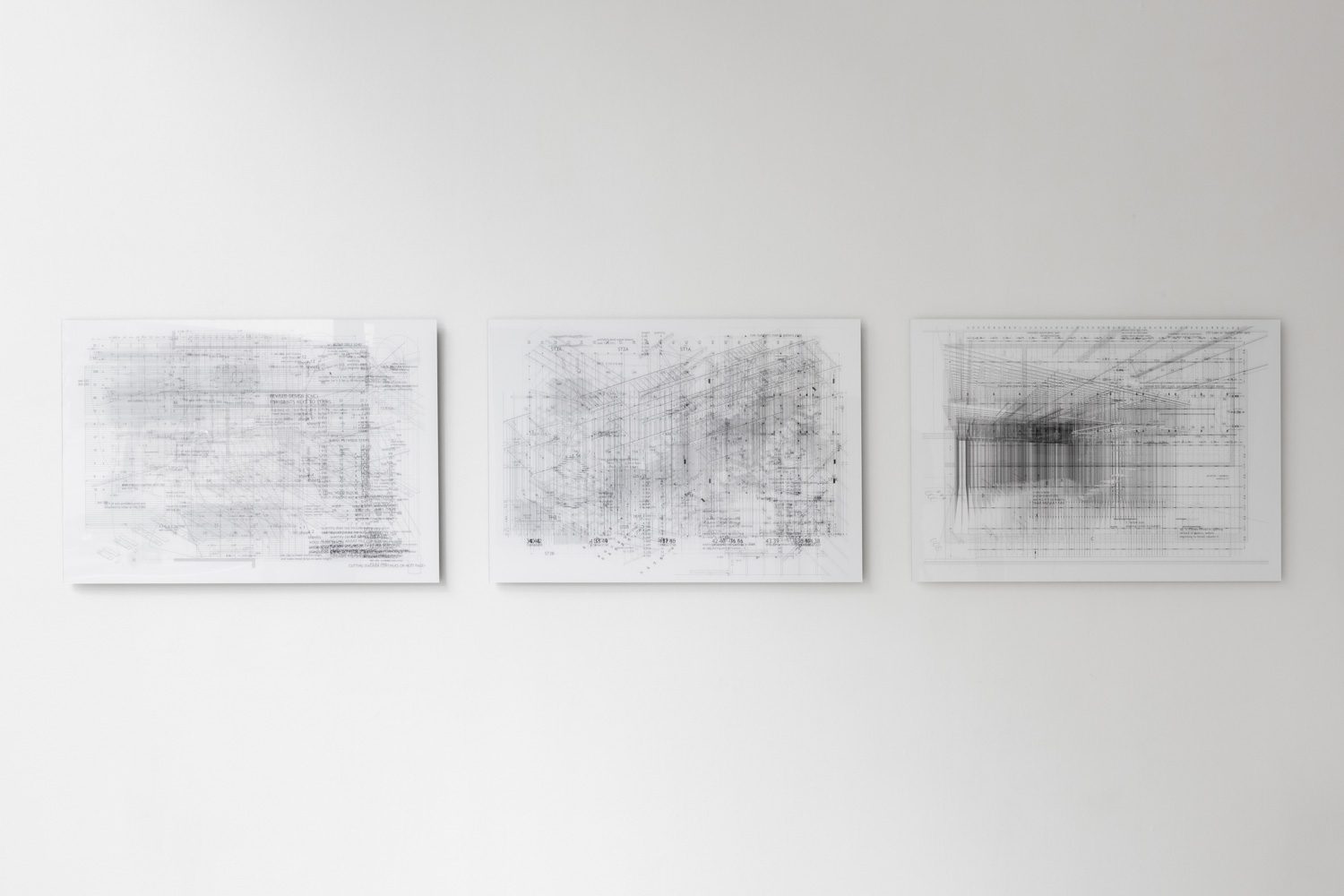
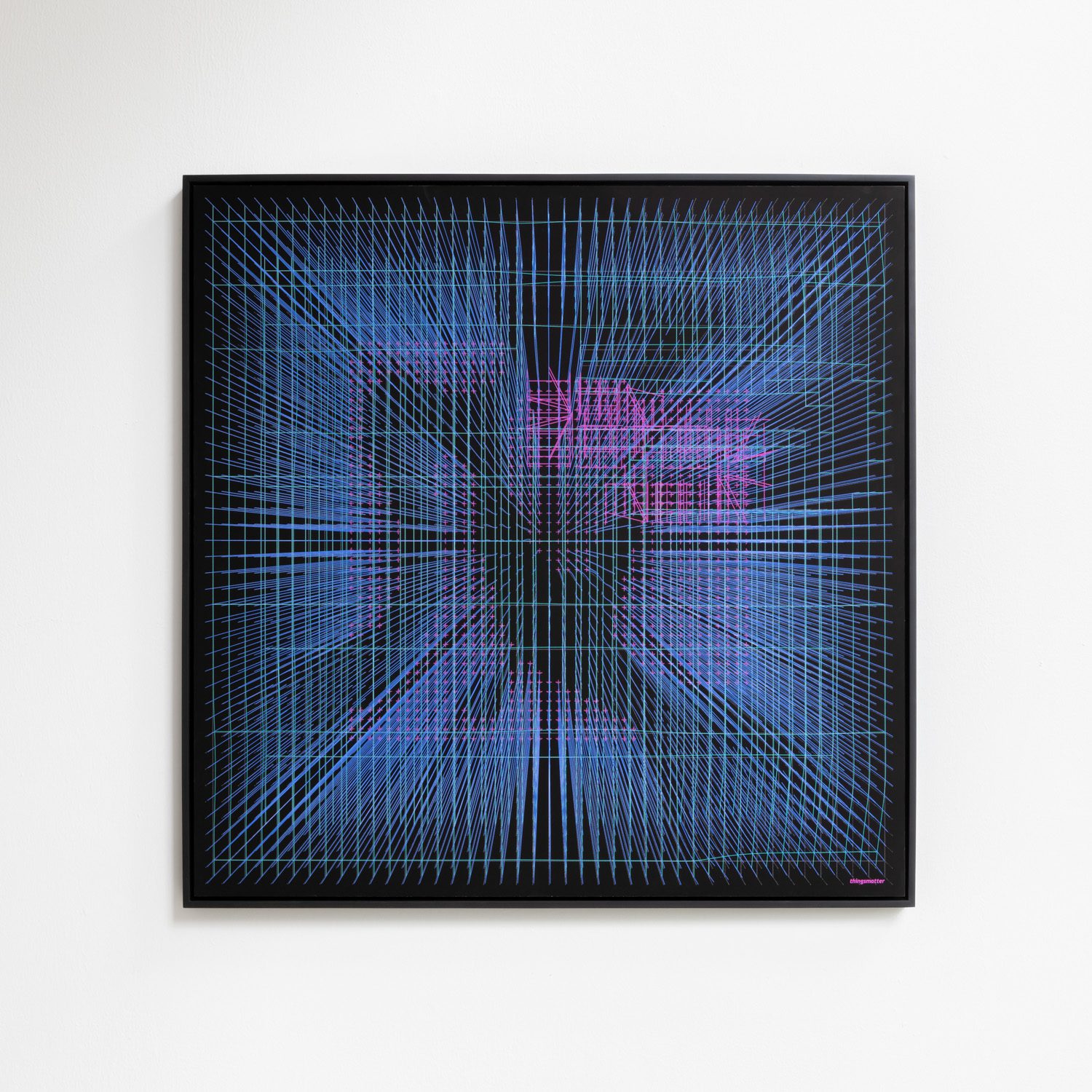
Field Collapse can be interpreted as a work of either architecture or art. The viewer’s authority to perceive and classify the status of this particular creation may be superior to that of art institutions. Field Collapse is an unusual art exhibition, particularly in how it works with the volume of the gallery space and the way it closely interacts with viewers more than most art pieces would allow; in its unapologetic display of material truth, and the diversity of the activities that have occurred over the past several months. Field Collapse is a clear example of a rather novel scenario in which two architects are given full control of a gallery space.
Field Collapse by thingsmatter is now showing at the 100 Tonson Foundation until May 28, 2023. Thu-Fri 10am-6pm and Sat-Sun 11am-7pm
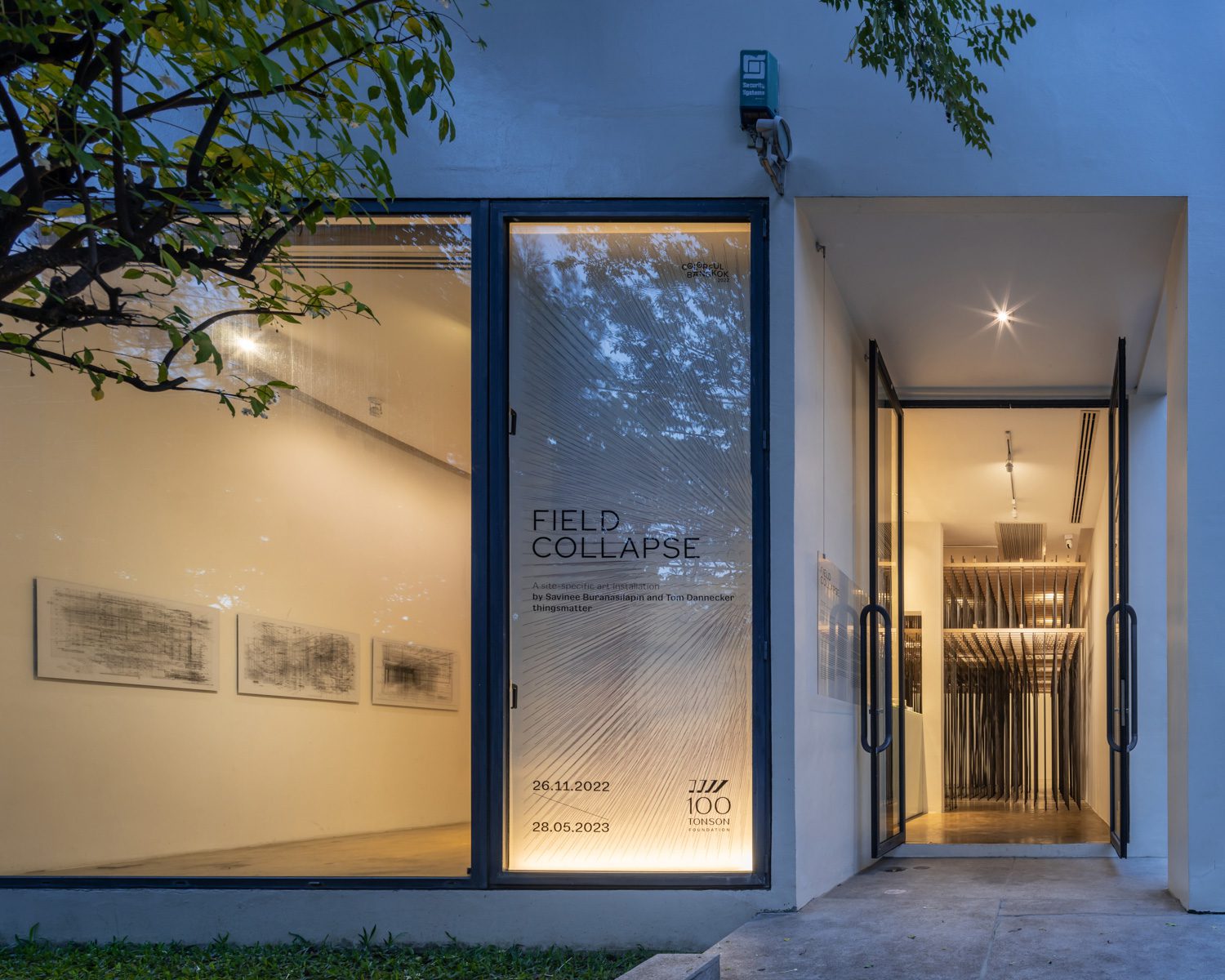
instagram.com/thingsmatterbkk
thingsmatter.com
facebook.com/100TonsonFoundation
IGNITE THE RIGHTS
WHAT SHOULD THE HUMAN RIGHTS’ CONDITION IN THAILAND IN THE FUTURE LOOK LIKE? ‘IGNITE THE RIGHTS’ THE EXHIBITION FROM AMNESTY INTERNATIONAL THAILAND EXPLORES HOPES FOR RIGHTS AND FREEDOM OF 13 ARTISTS WHOSE ILLUSTRATIONS ARE FEATURED IN THE AMNESTY’S 2022 CALENDAR, AND ECHOES THE ROLE OF CONTEMPORARY ART IN CALLING FOR HUMAN RIGHTS
CREATIVE NAKHON
SPEAK WITH SUPACHAI KLAEWTANONG, THE CHIEF MEMBER OF CREATIVE NAKHON, ABOUT THE OVERALL IMPRESSION OF THE 4TH CREATIVE NAKHON FESTIVAL AT NAKHON SI THAMMARAT WHICH IS HELD IN THE THEME “RE – SET”


